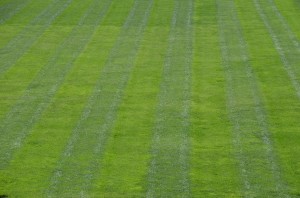Fall (late August to mid-October) is the “springtime” for lawn care. Most weeds have stopped growing and the cooler weather is a more comfortable time to work outdoors. If your home lawn is in horrible condition, now (not spring) is the best time of the year to take on lawn renovation.
First, here are a few guidelines before you get started. The information is useful for homeowners who reside in temperate areas of the U.S. (USDA hardiness zones 3-7). You will be sowing cool season grasses such as tall fescues, bluegrass, red or chewing fescues, and perennial ryegrasses. Most seed companies package seed blends containing 3-4 varieties. Consult your local Extension office or State Unversity website for additional information.
There are seven basic steps in renovating a lawn:
- Apply non-selective herbicide such as glyphosate (Roundup™) that eliminates all vegetation. Follow package directions and use the high rate.
- Wait at least seven days for the herbicide to work; it needs to penetrate the foliage and move (translocate) down to the roots to effectively kill plants. Weeds and old lawn grass may still appear green and are essentially killed.
- Rototill the soil to 4-5 inch depth.
- Broadcast fertilizer and lime (if needed); a soil test prior to starting may be of value, but proceed nonetheless..
- Lightly rake to smooth (level) the soil surface, break up large soil clods and remove large debris such as rocks, thatch, twigs, and most fallen tree leaves.
- Spread seeds uniformly over the surface and lightly rake the surface a second time to insure soil to seed contact. Previously, you should have measure out the area (length x width) to be seeded, calculated the area square footage, and weigh out amount of seed needed for complete coverage. Do not over apply seeds
- Spread clean straw (not hay) over the surface (1-2 bales per 1,000 square feet) to keep moist and hasten seed germination. It also covers the seed to prevent birds from feeding. Additional irrigation to provide grass seedlings water.


 Posted in
Posted in 
